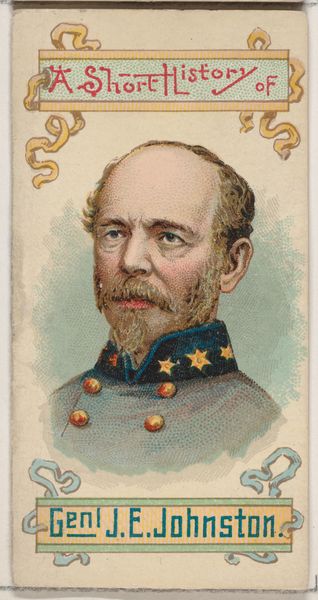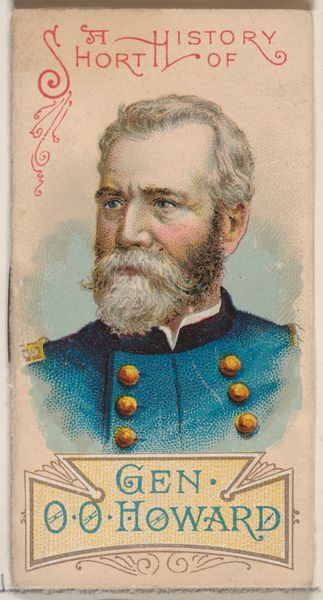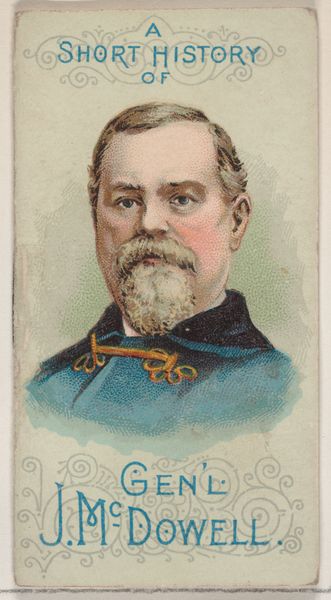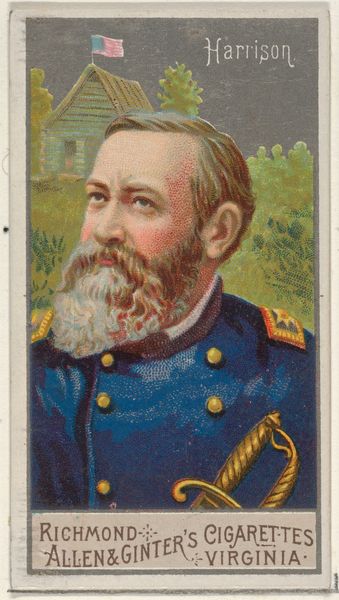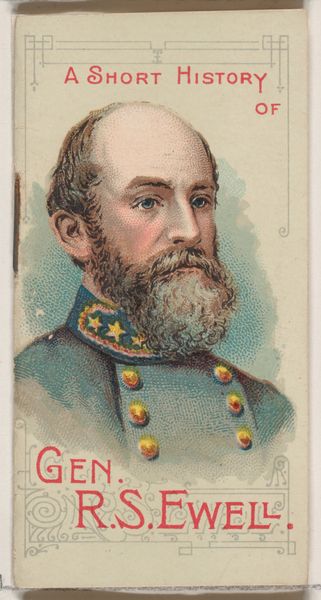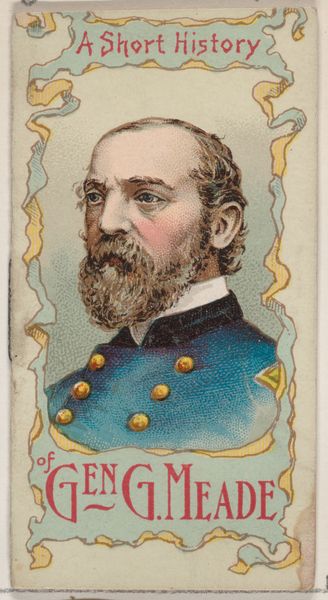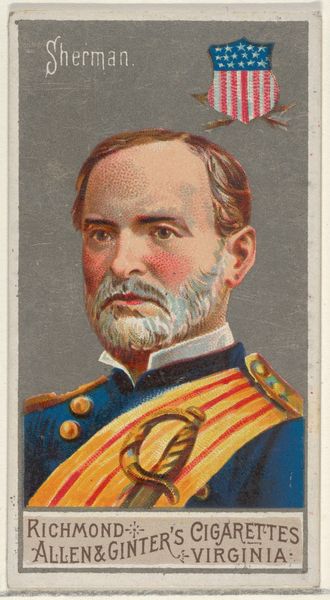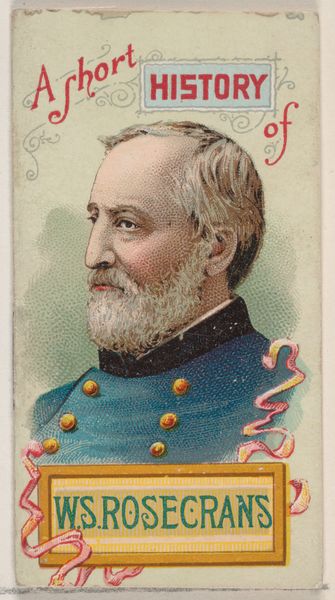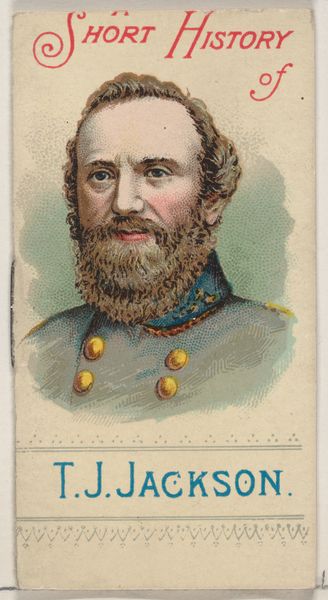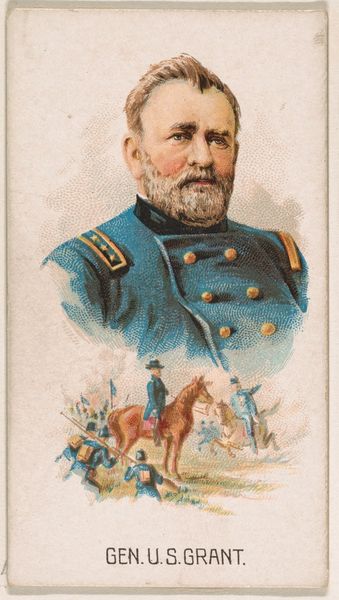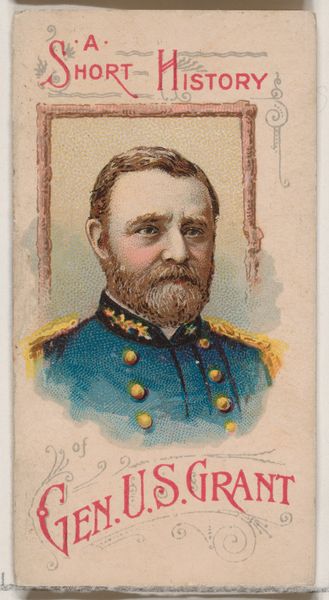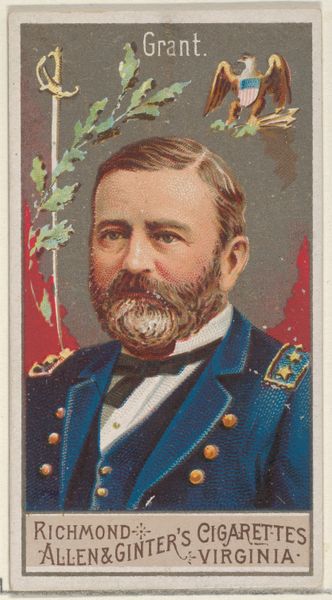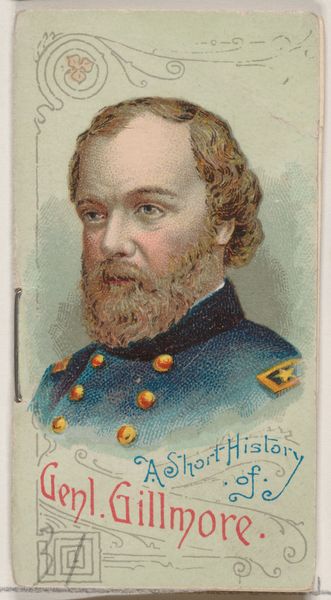
A Short History of General James Abram Garfield, from the Histories of Generals series of booklets (N78) for Duke brand cigarettes 1888
0:00
0:00
drawing, print
#
portrait
#
drawing
# print
#
portrait reference
#
19th century
#
men
#
history-painting
Dimensions: Overall (Booklet closed): 2 3/4 × 1 1/2 in. (7 × 3.8 cm) Overall (Booklet open): 2 3/4 × 2 7/8 in. (7 × 7.3 cm)
Copyright: Public Domain
Curator: Here we have "A Short History of General James Abram Garfield, from the Histories of Generals series of booklets," a lithograph made in 1888 by W. Duke, Sons & Co. Editor: The chromatic scale used is a bit overwhelming. The intense reds against the cerulean of his jacket create a cloying tension. There is no neutral tone to permit the eye a place of repose. Curator: It’s interesting that you feel overwhelmed by the color! Remember, these were produced as collectible cards in cigarette packs, a popular way to advertise and disseminate imagery at the time. What cultural associations do you think of with this particular printing of a "hero?" Editor: Hero is too strong of a word. Martyr, perhaps? Garfield's visage, stiff and averted, signals more than stoicism. Look how his flesh tones bleed slightly into the greenish ground. It almost seems prophetic, considering his tragic death shortly after his presidency began. Curator: Indeed. But let’s not forget that he's dressed in military attire—those gleaming gold buttons certainly demand respect. His beard, too, speaks volumes about his place in the public imagination. Facial hair in the late 19th century was symbolic of strength and experience, especially in leadership roles. Editor: True, but even those gold embellishments read like ornamentation more than markers of authority. They punctuate the eye without adding substantive value to the portrait's compositional totality. Is this promotion, or a memento mori? The piece fails to strike the right chord, landing in a miasma of uncertain representation. Curator: That sense of ambiguity perhaps mirrors the complex feelings Americans held toward Garfield and Reconstruction-era heroes in general—an interesting lens to view this work. Editor: It does underscore the strange aftertaste this image leaves; one grapples with a portrait that is more advertisement than history, creating its own uncertain afterlife.
Comments
No comments
Be the first to comment and join the conversation on the ultimate creative platform.
